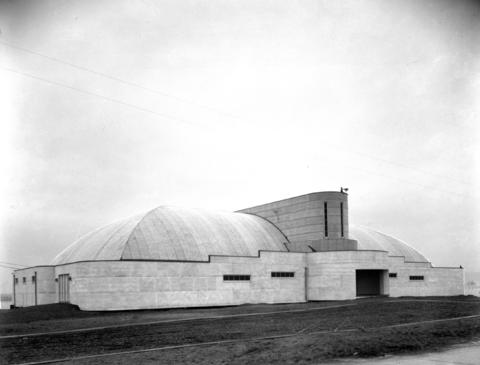Identity elements
Reference code
Name and location of repository
Level of description
Item
Title
1032-1
Date(s)
- 1934 (Creation)
Extent
Name of creator
Content and structure elements
Scope and content
ca. 1934. The domed Century Ballroom, on the "Seattle-Tacoma Hi Way" (U.S. 99) at Fife, was constructed by Rocco "Mac" Manza and James Zarelli and patterned after the Washington State Pavilion at the 1933 "Century of Progress" Exposition in Chicago. Bert Smyser was the architect and Bonnie MacDonald was the contractor. The Ballroom opened December 29, 1934. It had 20,000 feet of floor space and was built for $28,000, which the owners Manza and Zarelli paid back a little at a time. All of the big names played there; Tommy Dorsey and Kay Kyser were the top draws. In 1935, the Lombardo brothers, Guy, Carmen, Lebert and Victor, drew a crowd of 2,600 while the Tideflats was under martial law; Governor Clarence D. Martin had called out the National Guard to help with a sawmill workers' strike just a stone throw away. During the war, the ballroom ran two shifts of dancing with the second starting at 1:30a.m. for the swing shift workers at the defense plants. During the 1950's, music tastes were turning to rock and roll and people lost their interest in ballroom dancing. The Century closed in 1956, to be converted to a shopping mall. It burned in 1964. (TNT 3/23/1980, pg. D9)
Century Ballroom (Fife); Ballrooms--Fife--1930-1940; Musicians--Fife--1930-1940;

